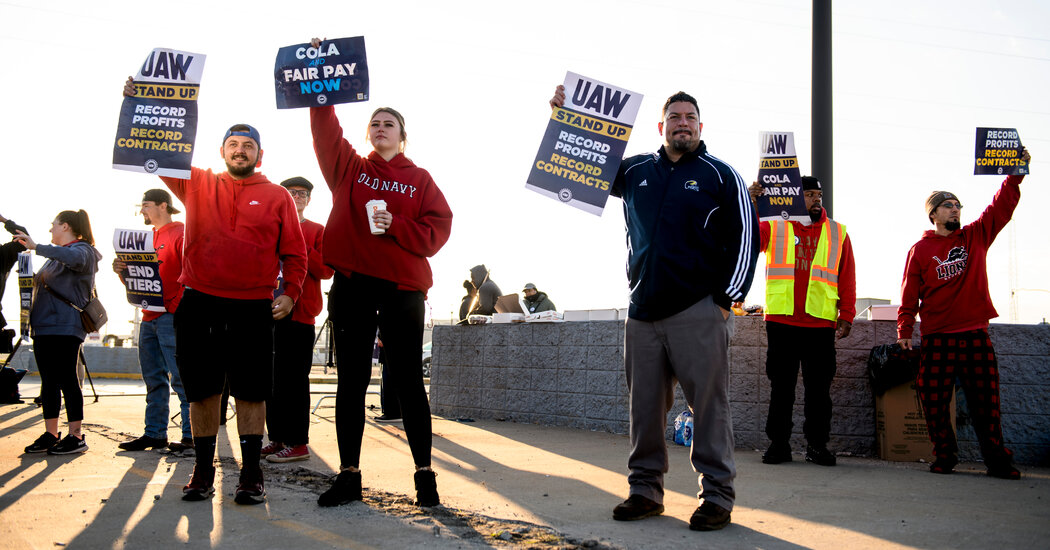Some Colleges Are Pivoting as FAFSA Delays Drag On
The University of California and California State University systems on Wednesday became the latest of a growing list of schools to give applicants extensions on their intent to register, now that colleges won’t get federal financial aid data until at least March.
At least 25 schools will no longer require commitments by May 1, since they may not be able to send admitted students financial aid offers until April. A few schools have created new aid forms or processes on the fly to award their own grants and scholarships.
What is increasingly resembling a kind of financial-aid free-for-all comes as a result of what was supposed to be simplification.
In 2020, Congress passed a law that required enormous changes to the processes used to award federal aid. The first was to the Free Application for Federal Student Aid, or FAFSA, form to make it easier to complete. Another was to the formula that doles out federal aid, which was made in part to offer more help to lower-income students.
By law, the Education Department was supposed to unveil the new FAFSA by the end of December.
It met that deadline, but some students and their parents have had trouble completing the form, and it will be March before colleges get any FAFSA data at all. Once they do, they must turn around and make confirmed aid offers to students, which will generally take several weeks more.
In usual circumstances, most schools want commitments from admitted undergraduate students by May 1. The University of California system has now pushed that out to May 15 for all but out-of-state and international applicants to the Berkeley campus. It won’t make financial aid offers until mid-April and may extend its new May 15 reply deadline if the Education Department falls further behind. The Cal State system and its 23 schools made a similar announcement.
“We aim to ensure California students, particularly those from low-income and first-generation backgrounds, have the time and space to fully assess their options,” said Han Mi Yoon-Wu, associate vice provost for undergraduate admissions in the office of the president, in an announcement.
At least 60 colleges and universities have extended their deadlines, according to a publicly available online spreadsheet that Danny Tejada, a college counselor in New York City, is updating. They include public universities like Oregon State and the University of Minnesota Twin Cities and private colleges like Lewis & Clark and Kalamazoo. Many others may be offering extensions to students who request one, even if they’ve been reluctant to say so publicly.
A few hundred colleges and universities — mostly private and with comparatively ample financial aid resources — remain largely insulated from the chaos. That’s because they don’t rely on the FAFSA alone and require families to fill out another, more detailed form called the CSS profile. That gives them enough data to make firm offers to most accepted students now.
But for all other institutions, the delays and continued uncertainty about possible additional unpleasant surprises from the Education Department are a source of intense frustration.
John Carroll University in Cleveland also took matters into its own hands this month. It will seek financial data from students directly and make offers before it gets any FAFSA data from the government.
The university is also guaranteeing that it will stand behind one crucial part of these new price estimates for admitted students with financial need. The scholarship or grant part of the price quote — that is, money that students do not have to repay as they would with a student loan — won’t decrease even if late-arriving FAFSA data contains a surprise.
“We have a strong desire to give families the financial information that they are asking us for,” said Carolyn Noll Sorg, vice president for enrollment management. “We feel like we have the ability to provide that to them, and we feel like it’s important not to sit on that and make them wait.”
Saint Louis University announced a similar initiative. It created an entirely new aid form that collects similar data to what FAFSA does. Its announcement described the resulting price quote as an estimate, but also said it was “comprehensive” and would include federal aid that it believed students would be eligible for.
“Provided that any data isn’t significantly wrong, we’re going to stand behind it,” said Rob Reddy, vice president of enrollment management. If there are big errors, he added — say an income discrepancy of $15,000 or more — the school will aim to find middle ground.
Both schools are institutions with Jesuit roots, and its officials stressed those origins in explaining the impetus for the changes. Still, first movers on pricing may matriculate an outsize number of students this year.
“This is mission-driven,” Mr. Reddy said. “But it’s a competitive business, and I’ll never deny that. If I can pick up some enrollment, we’re happy to do it.”
For now, these efforts are for newly admitted students only, but that could change.
“We can pivot on a dime,” Mr. Reddy said. “If we’re still in this mess, we’ll flip it for returning students too.”


